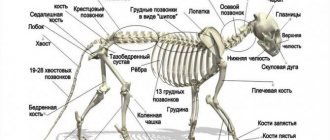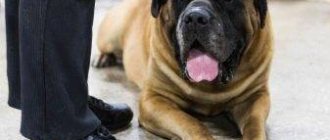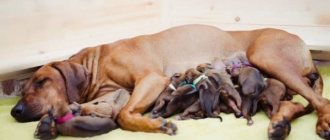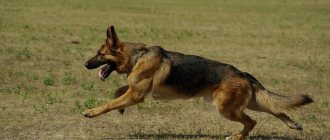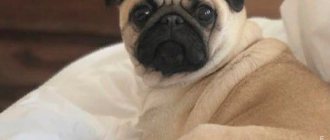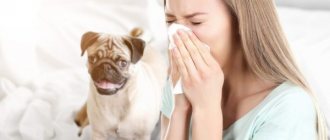Stati horses
An article is a part of the body that is responsible for performing a specific function in an animal's body. The structure of the horse should be well studied, as this knowledge will help in further examination. During the inspection, the condition of the articles is carefully checked, taking into account the age and sex of the animal. Based on the information obtained, conclusions are drawn about the advantages and disadvantages of a representative of a particular breed.
Stati horses
Skull box
The horse's skull consists of a large number of elements. It contains bones such as:
- orbital;
- occipital;
- temporal;
- parietal;
- frontal;
- lacrimal;
- zygomatic;
- mandibular and maxillary;
- nasal and incisal bones of the horse skull.
The horse's skull is a set of 34 flat-concave and concave plates that are fastened to each other using sutures. In addition, the horse’s skull, its anatomy, suggests 3 additional bones located in the ears and called auditory bones.
Features of the structure of the head
The horse's muzzle has the following profile options:
- Straight;
- Concave;
- Convex.
These parts may differ for certain breeds. For example, the concave muzzle of a horse is characteristic of purebred Arabian horses, which are often bred in arid areas. Due to this, less sand gets into the nostrils, which makes life easier in desert conditions.
Arabian horse - concave muzzle
Representatives of riding breeds have a straight profile. This ensures normal patency and free circulation of air through the nostrils. This helps animals when running.
Holstein breed - straight muzzle
A horse's muzzle with a convex profile is more common in trotters. Despite some roughness of the constitution, this does not in any way affect the endurance and working qualities of such horses.
Franco-American Trotter - convex muzzle
The horse's skull determines the structure of its head. When considering it, it is important to pay attention to the ganaches. This name refers to the zone of the angles of the lower jaw. The distance between the corners should be free enough so that the animal’s breathing is not difficult when bending the neck. To check, you can place your fist in the cheek. If it passes and fits freely, the distance is of normal width.
Eyes
These animals have lateral eyes, which helps increase vision. If you need to see what is happening on the left or right side, it is not necessary for the horse to turn his head and tense his muscles. But there is one nuance regarding vision. Everything in front of her nose and behind her rump falls into her blind spot.
horse eye
The pupil and iris are dark in color and brown or black. Pigmentation is also allowed. This does not in any way affect the overall working qualities of the animal.
The horse's eye is moderately convex, with a thin eyelid. Excessive convexity indicates disturbances in the functioning of the visual apparatus.
Jaw structure
Age is determined by the shape and number of teeth. The horse's jaw along with the tongue are part of the oral cavity.
The structure of the horse's jaw
The animal must have a developed jaw without defects. Malocclusion and other defects are undesirable. This can further have a negative impact on the horse's performance. She will not be able to digest roughage normally.
If there are defects in the toothless edge of the jaws, difficulties arise with inserting the bit.
Ears
The ears are proportional to the horse's head, or slightly smaller. They are located high and stand straight. The following types are distinguished:
- Pointed;
- Straight;
- Rounded.
Particular attention should be paid to the mobility of the ears. This sign is used to determine not only the emotional state of the animal, but also the state of the hearing aid. An alarming sign is complete immobility of the ears. The animal may be deaf.
Horse ears
If, on the contrary, it moves its ears excessively, this is also an alarming signal. Thus, the animal tries to use its hearing organs to the maximum due to a lack of visual information due to problems with the eyes. Normally, the ears have a slight slope. Also, in a calm state, they are relaxed and moderately mobile.
Nostrils
Horse Nostrils
A horse's nose has thick or thin walls. The space in the nostrils should be clean and moist. Cloudy liquid in the nasal mucous membranes can be an alarming signal indicating an illness in the animal. The nostrils hardly move if the horse is at rest.
Dorsal region
The main assessment is based on the length and width of the back. One of the important factors here is well-developed muscles. The length of the back includes the area of the withers and sternum. Horses with a short back are excellent for riding. When the animal gallops, it will be able to move its hind legs faster.
There are three types of back:
- straight;
- sagging (acquired due to improper saddle);
- convex.
Horses with a straight back receive the highest marks. Animals with a short back and well-developed muscles are better suited for racing.
Features of body structure
The general constitution and skeleton of a horse depend on the individual development of the animal, as well as heredity. The best option is considered to be a strong, lean body with well-developed muscles and croup.
The croup is the rear end of a horse.
Parameters to consider during inspection:
- Length (at least 35% of the body);
- Width;
- Incline.
Taking into account the last parameter, the following types of croup are distinguished:
- Normal;
- Deflated;
- Straight.
The most common option is normal tilt. The lowered croup gives a good extension of the front legs, which provides an advantage to the horses when running. The straight croup is the least common, usually seen in steppe breeds.
Back, withers and loin
The horse's withers provide the connection between the shoulder blades and the rest of the body. The length and height of this part of the body, as well as the back, may vary. Taking into account the bend, the following back shapes are distinguished:
- Straight;
- Convex;
- Sagging.
The best option is a straight back. The convex shape ensures good coordination between the front and rear, which is an advantage for working breeds. A sagging back should alert you. The animal may have had lower back injuries. This may make it difficult to operate or control the horse. Normally, a horse's skeleton should be strong.
A healthy horse should have a straight back, level and muscular loin
A healthy animal has a flat and muscular lower back (this is the area between the back and the croup). The height of a horse at the withers may vary between breeds. This parameter, together with body weight and length, determines the overall size of the horse.
Chest and abdomen
When assessing chest parameters in representatives of riding breeds, attention is paid to depth. Rounded ribs and a deep chest indicate good lung capacity due to the large capacity of the chest. For representatives of heavy-duty breeds, width is more important.
The horse's belly should continue the line of the chest
The belly should smoothly continue the line of the chest. If the stomach is retracted, this may be a signal of problems with the gastrointestinal tract or other diseases. With sagging muscles or excess weight, the stomach begins to sag.
Neck
The shape and length of the neck may vary. The straight shape is considered more convenient for working breeds.
horse neck
Those with long necks have an advantage in agility when running, but horses with short necks get less tired. This is due to a reduction in the passage of air through the respiratory tract.
Limb structure
The horse's legs should function normally. This is necessary for further stable work with the animal.
Front legs
The forelimbs include:
- Spatula;
- Shoulder, forearm and shoulder joint;
- Elbow;
- Wrist;
- Fetlock joint;
- Hoof.
The horse's hoof is a horny formation around the phalanges of the foot, and is an important part of the body of these animals. Based on their shape and condition, one can determine the approximate age and conditions of detention. The color of the hooves can be different - dark or light.
Horse hoof structure
- shoe;
- skin base;
- subcutaneous layer.
Injuries to this part of the horse's body can cause lameness and have a negative impact on normal performance.
hind legs
The hind limbs consist of the following parts:
- Hip, hock and fetlock joints;
- Hip;
- Knee;
- Shin;
- Metatarsus;
- Hoof.
The horse's hind legs are distinguished by more developed muscles.
The structure of the genital organs and udder
The mare's reproductive organs include:
- Ovaries;
- The fallopian tubes;
- Uterus;
- Vagina.
The external genitalia is called the vulva.
The male genitals consist of a penis, gonads, and testes with appendages.
The horse's udder has two small teats with outlet valves. The udder capacity is small, on average about two liters of milk. Because of this, frequent milking is required. Unlike cows, mares need a foal to produce milk.
Wool and topcoat hair
The mane evenly covers the neck. The horse's tail is located at the end of the croup. The length of the tail varies between breeds. As a rule, a horse's tail and mane have the same color, but the color of the outer hair of the body may be different.
Horse coat
In the summer, the hair is shorter and coarser. In winter it grows back and becomes softer. The condition of the coat directly depends on the living conditions of the animal. Color, length and density are a certain distinguishing feature of representatives of different breeds.
Vibrissae are located in the area of the nose, ears, eyes and lips. These tactile hairs act as nerve endings.
Thoracic, forelimbs
The forelimb of a horse has 40 bones. Each bone by itself or in the aggregate of its own kind represents separate parts. Let's look at them in a little more detail.
Spatula
A flat, triangular bone attached to the humerus forms the humerus. Along the entire length of the scapula there is a ridge called the scapular tubercle. The bottom of the shoulder blade is completely flat. It is located on the ribs, separated from them by the scapular cartilage.
Brachial bone
Quite short, has a head, a greater trochanter and above the condyle in the area of the elbow joint.
Radius and ulna bones
Both form the forearm. The radial one is more powerful, the ulnar one is located behind it. In the space between them there are blood vessels, and above and below there are ligaments for attaching muscles.
Carpal bones
There are several of them, they form the wrist from small bones neatly arranged in two rows. They have two movable joints on the side of the radius and the first row of carpal bones.
Metacarpal and two slits
Connected by an interosseous ligament, they serve as support for the large bone. For a long time, there was a misconception regarding slate bones that they did not perform any functionality, but were inherited from a prehistoric horse. They actually provide good support for the metacarpal bone.
Metacarpal and two slits
- 1 – radius;
- 2 – carpal bones;
- 3 – metacarpal bones;
- 4 – phalanges of the finger.
fetlock
Corresponds to the location of the fetlock, located between the brush and the hoof. Has a fetlock joint on top.
Sesamoid bone
Covered by tendons, located in the area where the tendons cross the joint.
Coffin bone
Serves as a bed for the finger and short coronoid bones, with a lining of cartilage tissue. All this forms the basis for a dense horny capsule called the hoof. The hoof print of the forelimb is characterized by a more rounded shape; it is flat along the edge and narrowed laterally.
Croup
Starts from the middle of the dorsal cover and ends at the top of the tail. This part of the horse accounts for 1/3 of the body length; in animals used for racing, this section is somewhat shorter. Croup can be of three types:
- normal;
- raised;
- lowered;
Most horses have a normal croup; in individuals participating in racing, it is lowered. If you examine the animal from behind, the croup should overlap the body up to the scapular expansion.
Raised croup in horses
Need to know. A lowered croup prohibits the use of a horse for draft work. Otherwise, injuries to the hip joints occur.
A few words about internal organs
The internal organs are almost identical to those of herbivores. The lungs have some differences, but not in structure, but in volume, which allows horses to inhale a large amount of air at a time. The lungs occupy almost the entire chest cavity. This feature allows you to develop high speed and increases endurance.
When assessing a horse's structure, the most attention is paid to the articles. Thanks to them, you can determine how to use the animal based on its parameters. The determination of a horse for a particular sport is influenced by various indicators, for example:
- sternum volume;
- shape of the cervical region;
- croup
Racehorses need to move and maneuver quickly, and therefore this is expressed in their physique. The animals are tall, have a lightweight general type, and well-developed muscles.
We invite you to join our Zen channel and group on VKontakte or Odnoklassniki, where new articles are published, as well as news for gardeners and livestock breeders.
Similar articles:
- Tips for choosing saddle pads for horses
- Why are stallions castrated?
- Requirements for keeping horses in a private yard

